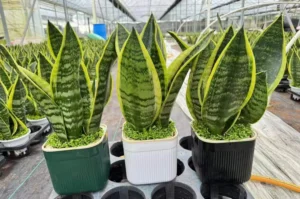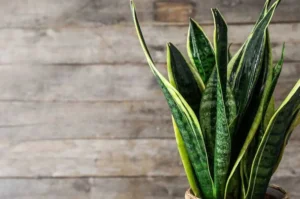On the off chance that you adore houseplants, you’ve likely listened of the wind plant. But possibly you’ve moreover seen it called Sansevieria. This can be confusing — are they the same plant or distinctive? Let’s clear things up in this article and clarify the contrast between wind plant and Sansevieria in straightforward words.
Are Snake Plant and Sansevieria the Same?
Yes and no.
The snake plant is a common name used to describe several plants that belong to the Sansevieria group. So, when someone says “snake plant,” they are usually talking about one of the many types of Sansevieria plants.
In short:
- Sansevieria is the scientific genus name.
- Snake plant is the common name.
But there’s a twist — Sansevieria is no longer a separate plant genus. Let’s dive deeper.
A Bit of History: The Sansevieria Name
Originally, Sansevieria was a group (or genus) of plants that included many species like:
- Sansevieria trifasciata (the most famous snake plant)
- Sansevieria cylindrica
- Sansevieria masoniana
All of these were grouped under the Sansevieria genus by scientists many years ago.
But in 2017, scientists studied the plant’s DNA and found that Sansevieria plants are actually closely related to another group called Dracaena. Because of this, Sansevieria is no longer a separate genus. It is now considered a part of the Dracaena genus.
So now, the scientific name for the snake plant is:
- Dracaena trifasciata, not Sansevieria trifasciata.
Why Do People Still Use the Name Sansevieria?
Indeed in spite of the fact that the logical title has changed, numerous individuals still utilize “Sansevieria” out of propensity. It’s a title that cultivators, plant venders, and plant partners know well.
Also, using “snake plant” is easier to remember and more common in everyday language. It’s the name most people search online when they want to learn about this plant.
Main Differences Between Snake Plant and Sansevieria
Here is a simple comparison to understand things clearly:
| Feature | Snake Plant | Sansevieria |
| Name type | Common name | Old scientific name |
| Still used today? | Yes, very common | Yes, but more among plant experts |
| Current scientific name | Dracaena trifasciata | Formerly used for many species |
| Popular species | Snake plant (mother-in-law’s tongue) | Includes many snake plant varieties |
| Common in plant shops? | Yes | Not usually used on labels |
Different Types of Snake Plants (Formerly Sansevieria)
There are many beautiful types of snake plants. Here are some popular ones:
1. Sansevieria trifasciata (Dracaena trifasciata)
- Also called mother-in-law’s tongue
- Long, flat, upright leaves with green and yellow patterns
2. Sansevieria cylindrica (Dracaena angolensis)
- Has round, tube-like leaves
- Grows in a fan shape
3. Sansevieria masoniana (Dracaena masoniana)
- Known as whale fin snake plant
- Wide, paddle-shaped leaves
All these were once under the Sansevieria genus but are now part of Dracaena
Why is the Snake Plant So Popular?
The wind plant is one of the most effortless plants to develop. Here’s why individuals cherish it:
- Low maintenance – doesn’t need much water
- Air purifier – helps clean indoor air
- Tolerates moo light – idealize for rooms or offices
- Stylish look – fits well with modern home decor
Should You Call it Snake Plant or Sansevieria?
Both names are fine, but here’s a simple rule:
- Use snake plant when talking to friends, family, or customers.
- Use Sansevieria or Dracaena trifasciata if you’re discussing the plant scientifically.
Most plant stores still use the names snake plant and Sansevieria because people recognize them easily.
Conclusion
So, what’s the real difference between snake plant and Sansevieria? They’re basically two names for the same group of plants. “Snake plant” is the friendly, common name. “Sansevieria” was the scientific name, but now it’s been replaced with Dracaena.
Don’t worry too much about the technical names. Whether you call it snake plant, Sansevieria, or Dracaena trifasciata, you’re still talking about one of the most beautiful and easy-to-grow plants in the world.






